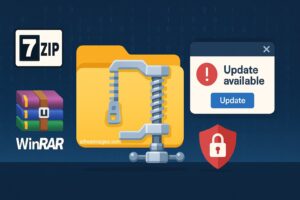During its Birthday Week, Cloudflare announced the private preview of Cloudflare Email Service, a managed offering for sending and receiving email directly from Workers — the company’s serverless runtime — with native bindings and no API keys. It squarely targets the transactional email space long dominated by Amazon SES, SendGrid, and Resend, while also inviting comparisons with regional providers like Acumbamail SMTP.
Beyond the headline, the move reinforces a broader platform strategy: in 2025 Cloudflare is far more than CDN + security. With a Data Platform (Apache Iceberg), telemetry tools (Observatory, Smart Shield), and now a global-by-default transactional email that treats email as a first-class application component inside the Workers ecosystem, Cloudflare is inching closer to a full cloud platform.
What Cloudflare Email Service Brings (and Why It Matters)
1) Send & receive directly from Workers, no API keys
The service exposes native bindings to send from Workers, and lets you receive & process inbound mail within the same runtime: parse messages, store attachments in R2 (S3-compatible), push tasks to Cloudflare Queues, or classify content with Workers AI. Locally, Wrangler can emulate sends for faster iteration.
export default {
async fetch(request, env, ctx) {
await env.SEND_EMAIL.send({
to: [{ email: "[email protected]" }],
from: { email: "[email protected]", name: "Your App" },
subject: "Hello World",
text: "Hello World!"
});
return new Response(`Successfully sent email!`);
},
};
Code language: JavaScript (javascript)2) Deliverability by default: auto SPF, DKIM, DMARC
Deeply integrated with Cloudflare DNS, the service auto-configures SPF, DKIM, and DMARC so inbox providers can verify your domain and trust your emails. Less friction, fewer misconfigurations, stronger reputation from day one.
3) Global endpoint
In classic Cloudflare fashion, there’s a single global endpoint delivering low-latency email worldwide — no regional juggling for senders.
4) Protocols & DX
Supports REST and SMTP, plus compatibility with frameworks like React Email for HTML-rendered messages. Wrangler streamlines local testing; DX feels natural if you already build on Workers.
5) Timeline
Private beta lands in November; a paid Workers plan is required. Per-message pricing is still being finalized.
Why Managed Email (Cloudflare/SES/SendGrid/Resend/Acumbamail) Beats Running Your Own SMTP
Spinning up Postfix/Exim that “sends email” is easy. Running a deliverable, resilient service is not. Here’s why most teams shouldn’t rely on a self-hosted SMTP:
- Reputation & IP warming
New IPs typically have neutral/low reputation. Warming them demands gradual ramp-ups, bounce/complaint monitoring, and avoiding blacklists (Spamhaus, Barracuda…). Managed providers handle ramp-ups, provide IP pools/domains with history, and expose feedback loops. - DNS & crypto done right
SPF/DKIM/DMARC are table stakes — add TLS/STARTTLS, rDNS/PTR, DMARC policy (quarantine/reject), ARC for forwarders, optionally BIMI. Common errors (overly strict SPF, broken DKIM) tank deliverability. Managed services assist or automate this (Cloudflare auto-wires records via its DNS). - Bounce & suppression hygiene
Classify hard/soft bounces, honor unsubscribes, and keep lists clean — or watch complaints climb. Providers bring webhooks/APIs and dashboards to do this right from day 1. - Scale & rate limits
Gmail, Outlook et al. impose per-IP/domain limits and punish bursts. Platforms absorb spikes via queues, backoff retries, and IP/domain pools, with telemetry and alerts. - 24/7 operations
Sudden blocks, SMTP timeouts, TLS quirks, evolving anti-spam heuristics — keeping an MTA always green is an SRE job. Providers deliver SLAs, monitoring, and dedicated deliverability teams. - Compliance & audit
Privacy, log retention, data residency, audit trails — enterprise email needs controls and certifications that scale better than a DIY stack. - Serious inbound
Inbound pipelines (support, invoices, orders) need parsing, antivirus, attachment controls, sandboxing. Workers + Email Service makes routing straightforward: parse → R2 → Queues/AI → app.
Bottom line: if email is critical to your app, the true TCO of “rolling your own” rarely pays off; time-to-inbox and deliverability are the KPI — not “SMTP is open”.
Quick Comparison: Cloudflare Email Service vs Amazon SES, SendGrid, Resend, Acumbamail SMTP
Note: Capabilities vary by plan and Cloudflare’s beta maturity. Pricing depends on volume/contract.
| Aspect | Cloudflare Email Service | Amazon SES | SendGrid | Resend | Acumbamail SMTP |
|---|---|---|---|---|---|
| Model | Managed, global, send/receive from Workers | Managed, regional (AWS) | SaaS (marketing + transactional) | DX-first transactional | SMTP relay + email marketing (ES) |
| Protocols | REST, SMTP | API, SMTP | API, SMTP | API, SMTP | API, SMTP |
| DX / Testing | Native bindings; Wrangler local | AWS SDKs; regional testing | Visual templates, sandboxes | Modern SDK, React Email | Editor, templates; Spanish UI |
| Deliverability | Auto SPF/DKIM/DMARC via Cloudflare DNS | Assisted/manual (per region) | Reputation tooling | DX best practices | Assisted; Spanish support |
| Inbound | Parse in Workers, store in R2, Queues, Workers AI | SES Inbound (Lambda/S3 rules) | Inbound Parse / webhooks | Webhooks (plan) | Forwarding/inbound (plan) |
| Templates | Compatible with React Email | Basics (SES/Pinpoint) | Visual templates, journeys | React Email native | Visual + transactional |
| Analytics | (TBA) Workers/Analytics | CloudWatch + SES | Rich analytics, A/B, suppressions | Dev-centric metrics | Sends, bounces, opens |
| Endpoint/Region | Single global endpoint | Per region | Global (own DCs) | Global | Global (Hispanic focus) |
| Pricing | Requires paid Workers; per-message TBD | Low per-1,000 + transfer | Tiered by volume/features | Volume-based, DX | Contacts/sends (marketing) + SMTP volume |
| Best fit | Apps on Workers, edge-first | 100% AWS apps | Marketing + TX all-in-one | Devs prioritizing DX | ES/LatAm businesses needing Spanish support |
Adoption Patterns & Use Cases
- SaaS & marketplaces: operations receipts, account verification, password reset, billing, notifications. Cloudflare shines for Workers apps; SES within AWS; Resend for fast DX; SendGrid if you want marketing + transactional under one roof.
- Ecommerce: order confirmations, shipping updates, abandoned carts. SendGrid offers journeys; Acumbamail blends campaigns + SMTP with Spanish support.
- Support/inbound: route email into serverless workflows. Workers + Email Service simplifies parse & queues; SES Inbound pairs with Lambda.
- Edge-first apps: near-user latency, perimeter parsing, cheap object storage in R2.
Practical Playbook: From “Hello World” to Production
- Smoke test with a secondary domain
Measure time-to-inbox, SPF/DKIM/DMARC health, and bounce/complaint webhooks. - Warm reputation
Start with low, steady volume; track hard/soft bounces and list hygiene. - Instrument webhooks
Bounces, complaints, deliveries, opens into your pipeline (auto-suppressions). - Sandbox inbound
Enforce size/attachment limits, consider AV/sandbox for PDFs/Office files. - Compliance check
Validate residency, log retention, and privacy policies with IT/DPO. - TCO comparison
Cost per 1,000 + storage, queues, egress vs your current provider — include ops savings (DNS automation, troubleshooting, observability).
Bottom Line
Cloudflare’s Email Service doesn’t “kill” SES or SendGrid — it broadens the market with a deeply integrated Workers experience and a mission to remove friction (DNS, global endpoint, inbound parsing). For teams already at the edge, it’s a natural on-ramp. If you live in AWS or need a marketing suite, SES and SendGrid remain top picks. Want Spanish support and a blended marketing + transactional UI? Acumbamail SMTP stays compelling.
Remember why these services exist: real deliverability and 24/7 ops. Running email “on your own SMTP” is cheap — until it doesn’t arrive, you get blocked, or your domain reputation goes critical. In 2025, the edge in transactional email isn’t “having SMTP,” it’s getting into the inbox on the first try with traceability, security, and predictable costs.
FAQs
What are the advantages of managed email over a self-hosted SMTP server?
Better deliverability (reputation and controlled warm-up), solid DNS/DKIM/DMARC, automated bounces/suppressions, scale with rate limits and retries, monitoring/SLAs, and compliance. The true TCO beats DIY in most cases.
Why pick Cloudflare Email Service if I already use Workers?
Native bindings, Wrangler for local testing, automatic SPF/DKIM/DMARC via Cloudflare DNS, a global endpoint, and inbound parsing with R2, Queues, and Workers AI — less glue code, faster to production.
How does Cloudflare compare to Amazon SES or SendGrid?
Cloudflare simplifies with a global endpoint and automated DNS. SES shines inside AWS with low cost per 1,000 sends. SendGrid offers a full marketing + transactional suite with templates and journeys. Resend leads on dev-friendly DX; Acumbamail provides Spanish-language support and UI.
When can I try Cloudflare Email Service and how much will it cost?
Private beta begins in November and requires a paid Workers plan. Per-message pricing hasn’t been published; join the waitlist and compare TCO vs your volume and inbound/outbound needs.
Sources: Internet útil, infoq.com and blog.cloudflare.com











